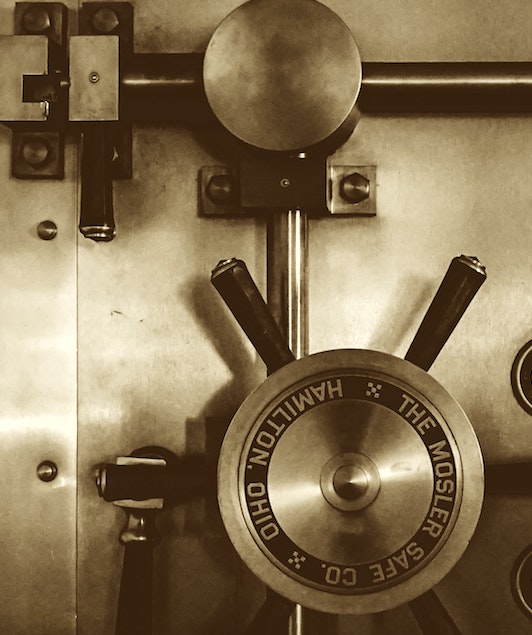Unlocking The Secrets Of Self-Directed Tax-Sheltered Profits
Are you looking to take control of your financial future? Self-directed IRAS are a popular option for investors who want to diversify their portfolios. Amanda Holbrook with Specialized Trust Company joined us and explained how to maximize sef-directed tax-sheltered profits.
The current financial climate is unpredictable, making it more critical than ever to make smart investments that will protect your wealth and help you reach your retirement goals. A self-directed IRA offers the potential for higher returns on investment (ROI) than traditional IRAs while also providing diversification opportunities that can help reduce risk.
Read on to learn more about the advantages of investing in a self-directed IRA.
Characteristics Of A Self Directed IRA
Unlike traditional IRAs and Roth IRAs, which limit investments to stocks, bonds, mutual funds, and other securities approved by the IRS, SDIRAs allow investors to invest in alternative assets.
Types of Investments Available
SDIRAs offer investors many investment opportunities beyond those available with traditional IRAs or Roth IRAs. These include:
- real estate investments
- private placements such as venture capital funds or angel investing
- commodities such as gold or oil
- cryptocurrency investments such as Bitcoin or Ethereum
Tax Benefits of Self-Directed IRAs
A self-directed IRA gives you more flexibility and control over where you invest your money.
In addition to increased flexibility and control over investments, self-directed IRAs offer more significant potential for higher returns than other retirement accounts due to their ability to invest in real estate or private businesses.
Investors can use funds from their self-directed IRA to purchase properties or start businesses without paying taxes if they follow IRS rules and regulations regarding prohibited transactions.
If you're interested in taking advantage of the potential benefits offered by a self-directed IRA, there are several steps you should take:
- Choose an administrator who specializes in self-directed IRAs;
- Open an account with your chosen administrator;
- Fund your account with cash or rollover funds from another retirement plan;
- Select investments that meet IRS guidelines; and
- Monitor your investments regularly and comply with all applicable laws and regulations related to investing with a self-directed IRA.
The bottom line on SDIRA tax benefits:
- Contributions to an SDIRA are tax deductible up to certain limits set by the IRS.
- Income or capital gains are tax-deferred until you begin taking distributions in retirement.
- Your money grows faster since you only have to pay taxes once you withdraw it.
- Compared with other tax-sheltered investment options such as 401(k)s or Roth IRAs, self-directed IRAs offer more flexibility regarding what types of investments can be held within them and allow for greater control over your portfolio management decisions.
Investing in Real Estate with Tax-Sheltered Capital
Investing in real estate with a self-directed IRA is attractive for diversifying your retirement portfolio. It allows you to invest in real estate without paying taxes on the profits until you withdraw them from your account. But certain restrictions and requirements apply when investing in real estate with a self-directed IRA.
Basic Requirements and Restrictions
To invest in real estate with a self-directed IRA, you must have an existing traditional or Roth IRA account. You must also set up a qualified custodian to oversee the transactions and ensure you follow IRS rules. The custodian will also handle the paperwork associated with the investment, such as filing tax forms and other documents.
The IRS dictates the types of investments that are allowed. Generally, you must invest in "real property," including the following:
- land
- buildings
- rental properties
Transitioning to a Self-Directed IRA
There are several accounts that you may transition to an SDIRA. The following are among the most common.
Traditional and Roth IRA
Both Traditional and Roth IRAs can be transitioned into self-directed IRAs. The process is relatively simple:
- you open a new account with an IRA custodian who accepts the types of assets you wish to invest
- direct the new custodian to initiate a transfer from your old IRA
Employer-Sponsored Accounts
401(k)s and other employer-sponsored accounts can also roll into a self-directed IRA. The process is similar to transitioning from a traditional or Roth IRA.
Brokerage Accounts
While brokerage accounts offer a wide array of stocks, bonds, and mutual funds, they typically do not provide the alternative investment options of a self-directed IRA. Converting a brokerage account involves:
- Selling off your investments.
- Paying any necessary taxes.
- Depositing the cash into a self-directed IRA.
Key Takeaways
The key points to understand when investing through a self-directed IRA are the range of investment options, the IRS restrictions, and the responsibility and risk that come with a self-directed IRA.
If you're looking to take advantage of the unique benefits offered by a self-directed IRA, Royal Investing can help you on your journey. Sign up for group mentoring to learn how to maximize your investment opportunities and capitalize on the potential benefits of a self-directed IRA.
 Terms to Know: Solo 401(k)/IRA, Disqualified Person, Prohibited Transaction
Terms to Know: Solo 401(k)/IRA, Disqualified Person, Prohibited Transaction Types of Prohibited Transactions
Types of Prohibited Transactions What are Some of the Most Common Prohibited Transactions?
What are Some of the Most Common Prohibited Transactions?



 What Can You Hold in a Self Directed IRA Business Trust?
What Can You Hold in a Self Directed IRA Business Trust?
 Bitcoin Basics
Bitcoin Basics Start Investing Today
Start Investing Today Do Roth IRAs Have Additional Bankruptcy Protections?
Do Roth IRAs Have Additional Bankruptcy Protections?
